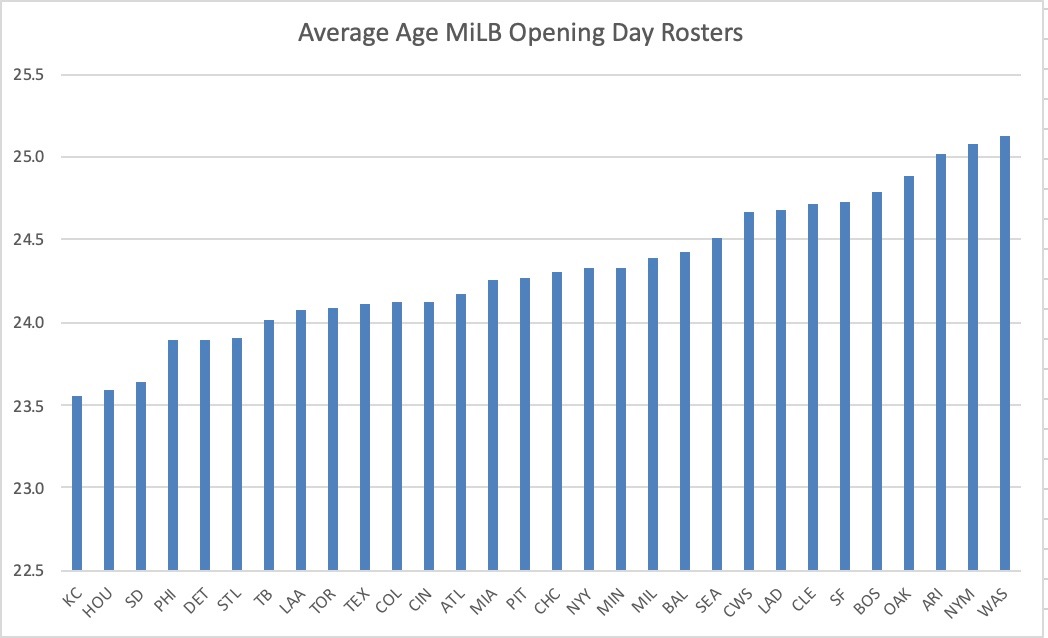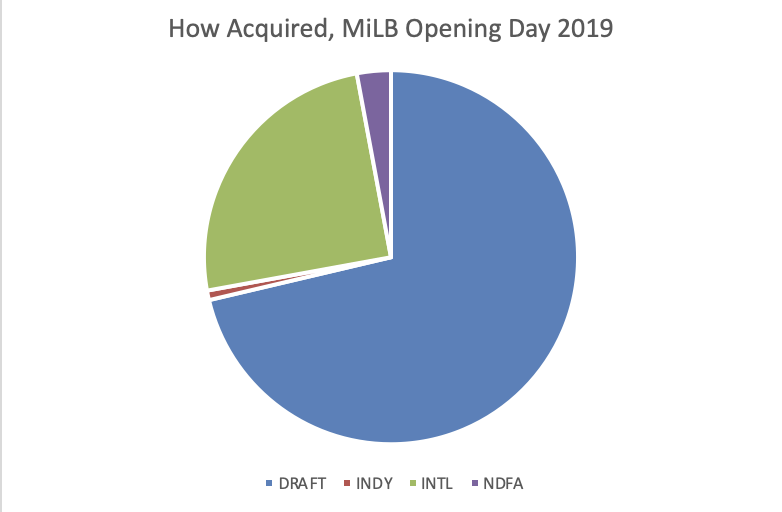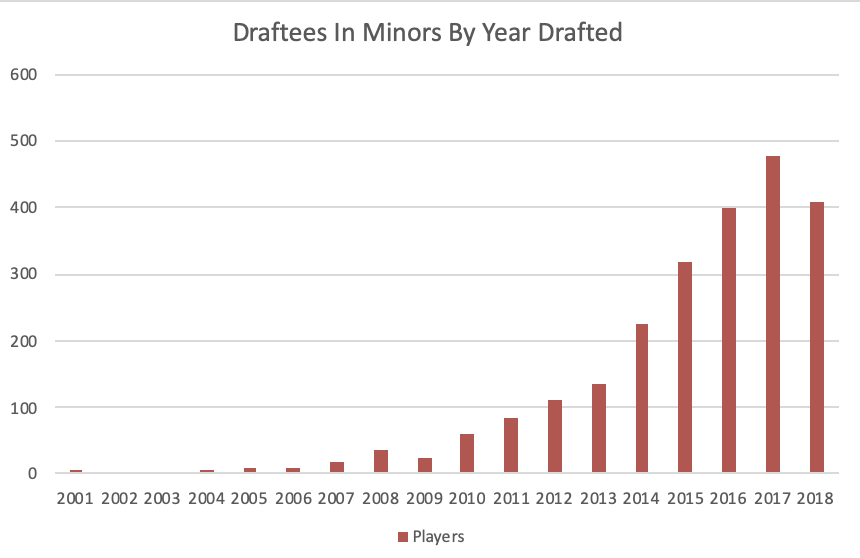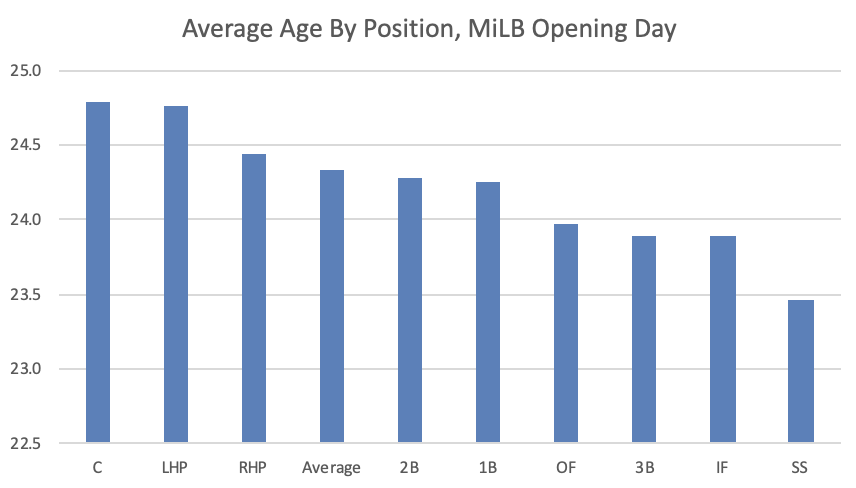2019 Minor League Baseball Rosters By The Numbers


Image credit: Rajai Davis (Photo by Don Juan Moore)
Royals, Padres and Astros rosters’ youth stands out.
The Padres, our No. 1 farm system coming into the 2019 season, have consistently fielding some of the youngest rosters in the minors in recent years. This year is no exception. The average low Class A player is 22, but the Padres low Class A Fort Wayne roster’s average age is 21, youngest in low Class A.
Similarly, the Padres high Class A Lake Elsinore club is the youngest in all of high Class A. At just a few days over 22, the Storm’s roster would actually be young for a low Class A club, and it’s 1.2 years younger than the average high Class A team.
But the Padres aren’t the only organization filled with youngsters in the minors. Across all four full season rosters, the Royals and Astros actually have a younger average age than the Padres.
At the other end of the spectrum, the Mets and Nationals have the oldest rosters in the minors. The biggest reason for that is the advanced age of their Triple-A clubs. The Mets’ Syracuse club is the oldest in the minors with an average age of 29.

Few Paths To Pro Ball
Of every 100 players on a minor league Opening Day roster, 96 were signed either out of either the MLB draft or on the international amateur market. So it’s very hard to make it to the minors if a player isn’t identified as a prospect through the traditional routes. There are 2,332 draftees (71 percent) and 815 international signees (25 percent) on Opening Day rosters.
There are exceptions however. Even with a 40-round draft, the easiest additional path is for players who are signed as nondrafted free agents–players who were draft eligible but unpicked and then signed post-draft contracts. There are 96 NDFA on rosters as well as 27 players who were signed out of independent leagues.

Where Players Come From
While conditions in Venezuela have continued to get worse and worse, the number of players on minor league rosters from Venezuela continues to grow. Two years ago, we counted 217 Venezuelans on minor league Opening Day rosters. Last year that grew to 255 players. This year, it’s grown again to 269, which is 8.2 percent of all players.
There are 2,392 players born in the U.S. (73.1 percent) on rosters. The next largest percentage comes as expected from the Dominican Republic with 381 players (11.7 percent). There are no other countries that top two percent of Opening Day minor leaguers. Cuba’s 45 players (1.4 percent), Mexico’s 40 (1.2 percent) and Canada’s 38 (1.2 percent) are the other countries with more than one percent of the minor league demographics.
Australia’s minor league representation appears to be in decline. Two years ago, there were 11 Aussies on Opening Day rosters. This year there are six. Panama has grown from having 17 players two years ago to 23 Panamians this season.
Hanging Around
Syracuse outfielder Rajai Davis, 38, is the oldest player in the minors. Davis was a 38th-round pick of the Pirates in 2001. He actually still has some company from that draft class. Fellow 2001 draftees Ricky Nolasco, J.D. Martin, Rene Rivera and Chris Stewart are also on Opening Day rosters. Rivera and Davis are teammates for Syracuse while Stewart plays for El Paso, Nolasco is on Reno’s disabled list and Martin pitches for Double-A Tulsa.
There are three players signed internationally in 2000 who are still playing in the minors. Outfielder Gregor Blanco (Triple-A Syracuse), third baseman Andres Blanco (Triple-A Gwinnett) and catcher Dioner Navarro (Triple-A Columbus) are the oldest international signees in the minors.
Looking at who is in the minors by draft year shows how quickly the numbers drop off. There are fewer 2018 draftees than 2017 draftees on full season rosters because there are a number of 2018 draftees held back in extended spring training to start their first full pro season. But scan to the 2016 draftees and that decline is because of players being released.
There are 77 fewer 2016 draftees than 2017 draftees on MiLB rosters. There are 81 fewer 2015 draftees than 2016 draftees. And then there are 94 fewer 2015 draftees than 2015 draftees.
Every year, every minor leaguer is fighting time. Every year there’s a new draft class and a new group of international signees, so players have to be released to make room. Simply surviving to stay on a roster for a third or fourth minor league season is a success. That steady drop off doesn’t fully stop until players reach their 10th minor league season. At that point, most of the attrition has already happened, as there are only 87 players in the minor leagues who were drafted before 2009.

Catchers Get More Time
Any player looking to stick around a long time would be wise to pick up a catcher’s mitt. Of the 25 oldest players in the minors, nine (36 percent) are catchers. Across the full season minors, catchers are older than any other position. Both lefthanded and righthanded pitchers are the next oldest.
At the other end of the spectrum, shortstops have the youngest average age. That’s not surprising since shortstop is a position requiring athleticism and quick reflexes, and players move off of shortstop as they age.


Comments are closed.